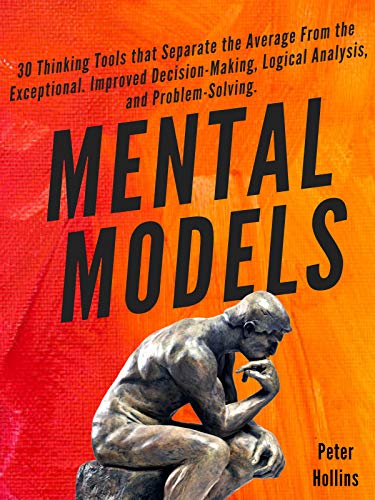
Mental Models: 30 Thinking Tools that Separate the Average from the Exceptional
von Peter Hollins
When Bezos framed his dilemma that way, the decision was almost automatic. He quit his high-paying job at a hedge fund—even walking away from his annual bonus—moved to Seattle, and started running Amazon from his garage.
More often than not, when we decide to put more “input” into our work, something else tends to get lost. If you try reading 900 words a minute, you will lose comprehension and understanding, which is far more valuable to the overall task of reading. If you try learning the piano too intensely, you will burn out and start hating it. If you try to study for nine hours straight, chances are you won’t remember much. Not recognizing the law of diminishing returns will usually hurt you. So this mental model has two uses: first, to more accurately analyze information about others; second, to know where your own equilibrium points are and when you should rethink how much effort you are putting in for the number of results you are getting.
Let the entire cycle play out and assess all of the information you’ll encounter during that time. Don’t make any sudden moves or change of plan after the occurrence of the big, abnormal event. By being patient and waiting for events to return to their normal state, you’ll get a much better sense of how the situation has been changed. Statistically speaking, it will probably not be that much at
The SCAMPER method is one of the easiest yet most effective strategies for finding solutions to problems and sparking creative thinking. Because a process is explored from seven different perspectives—substitute, combine, adapt, modify, put to another use, eliminate, and reverse—no stone is left unturned, and even unconventional solutions can be uncovered. Where you had one or two ways of looking at a problem, you now have seven additional approaches to apply.
The mental models in this last chapter don’t necessarily belong to either of those categories. They are all known as eponymous laws, which is a fancy term that simply means they were named after someone—usually the person who made the observation or discovery.
Set aggressive deadlines so that you are actually challenging yourself on a consistent basis, and you’ll avoid this pitfall. A distant deadline also typically means a sustained level of background stress—push yourself to finish early and free your mind. Save your time by giving yourself less time.